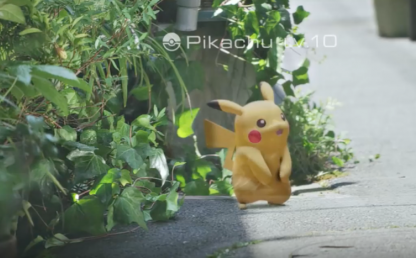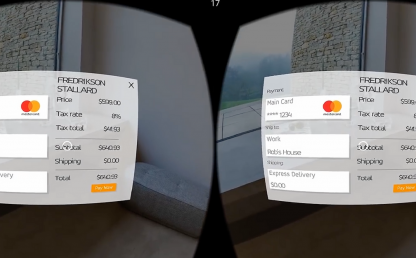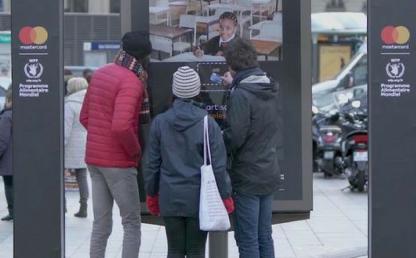4 ways to use VR in your marketing campaigns

Virtual reality (VR) technology is finally becoming mainstream. With the use of CGI and 360 videos you can now experience traveling to the top of Mount Everest, touring a football stadium, interacting with dinosaurs, designing with a Tilt brush, playing games, and more all through a headset! For years, gamers and marketers have craved the immersive experience that VR can provide. First, we saw the Oculus Rift and HTC Vive launch, but the price tag kept them out of reach. Now we are seeing more affordable headsets hit the market like the Samsung Gear VR, Playstation VR and Google Daydream.
The growth in VR can be seen by projection from the IDC that estimate total revenue for VR and augmented reality (AR) will increase from the 5.2 billion last year to over $162 billion by 2020. Brace yourself, as VR will soon become more integrated with our daily lives. How can your company take advantage of this technology and utilize it in your marketing campaigns? Here are 4 ways.
1. Organizing a PR Stunt/street event
Event marketing is a way to get out and get in touch with your audience, and incorporating VR will make it all the more interesting to consumers. This tech still has a novelty about it that interests and excites customers.
Qatar Airways used VR to their advantage in November 2016 by organizing an event at Waterloo Station in London. Consumers got the chance to experience the new Airbus A350 in a virtual environment. The event included a demo of the seats in business class as well as a video booth with a VR experience of business class travel.

Another example can be seen by the World Wildlife Fund (WWF), who aim to conserve the biodiversity of the Earth. They offered a unique experience showcasing their efforts to save wild tiger populations worldwide. They used VR as well as CGI 360˚ film-making that placed participants in the role of rangers moving through forested areas, the tiger's natural habitat, while also informing them of the conservation work the organization carries out.
Afterwards, participants were encouraged to become members of the WWF or to even adopt a tiger. By actually being able to experience what is going on with the tigers, they were more emotionally involved and thus more likely to support the cause.
What kind of VR experience could your company create to engage your audience? You will want to make it short, entertaining, informative, and relevant to your brand.
2. Retail (VR in stores)
The next way to integrate VR is in retail stores. VR is a great option in a retail environment, especially to help enhance a consumer's shopping experience. As an example, the launch of Lego’s Nexo Knights in Singapore in August 2016 included a VR touchpoint experience for kids. Using a cardboard VR headset along with a handset, kids could meet the Nexo Knight Characters and see a VR representation of their world, for example, their training ground. This was an exciting and fun way to increase interest in the brand’s products.
Jaguar has also used VR experiences in their dealerships. Through a VR experience, potential customers could interact with life-sized Jaguar models, including 360˚ tours and viewing of the technical details of each vehicle highlighted through animations.

This kind of experience allows customers to interact with your products in a new way. The more engaged they are, the more likely they will buy.
3. Sharable 360˚ videos
Sharable 360˚ videos are becoming popular on the social media platforms YouTube and Facebook. As of last week, it is possible to stream live 360 videos from Facebook. They are videos in which you can look around at a 360 view and are created with the use of a special camera that records 360 degrees around itself.
Now, your audience can get a more immersive look at what you want to share without necessarily needing a VR headset. They can view it on their mobile or laptop (they need the latest version of Chrome, Opera, Firefox, or Internet Explorer on their computer).
Are you launching a new store? Don’t just post pictures or record a video walk-through. Post a 360 video that allows viewers to scroll around and look wherever they want to look. You will need a good 360 camera which you can learn more about in our VR whitepaper. Doing so, you also don’t need to meet your audience in person. You can reach a much wider audience by sharing your video online through Facebook, Youtube or your website.
An excellent example of this is the Greenpeace video, ‘A journey to the Arctic.’ Through the use of 360˚ video it allows viewers to experience the Arctic in ways never seen before. The ability to have a 360˚ viewpoint gives you the feeling that you are actually there.
4. Virtual Reality App
Finally, you may consider creating a dedicated app that offers branded VR content. A good example is the interactive storytelling app Oceans VR. With the Economist VR app, The Economist brought the topic of overfishing of the Earth’s oceans to light. Not only was the app interesting to use, it was filled with facts that highlighted the current predicament faced a number of fish species, including tuna. It also suggested solutions that could be considered to help solve the problem.
Your brand can deliver one-of-a-kind interactive, educative and entertaining content by using VR. Used correctly, a good VR experience will leave a lasting impression with consumers through their interaction with both the experience and the brand.
Be warned that the VR experience you decide upon must be relevant to your products, the objective of your brand as well as the messages used. It’s not so good to do VR for the sake of it or to try and be at the cutting edge. It has to be relevant!
For more information on VR and immersive marketing, download our white paper by clicking here.
 Insights
Insights

